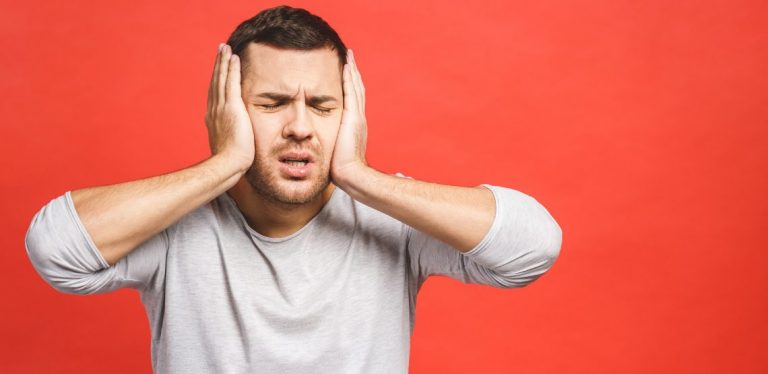What is a Cluster Headache?
We've all experienced the discomfort and pain of a headache at one point, but not everyone suffers from cluster headaches. This headache has a specific pattern and symptomatology, unlike migraines or headaches brought on by dehydration, tension,
or injury.
Cluster headaches get their name from the "cluster" pattern that characterizes their onset. According to the Mayo Clinic, cluster headaches occur in cyclical patterns of cluster periods. These cluster periods can last anywhere from weeks to months.
You may experience headaches every day or even multiple times a day. Sometimes there is a seasonal pattern to cluster periods. At the same time, other people may experience episodes of cluster headaches that last for weeks to months then go into remission for up to a year.
Unfortunately, there isn't a way to determine how long a cluster period or attack will last, when and if you will go into remission, and how long your pain-free period may be.
Cluster headaches are one of the most painful types of headaches and often come on suddenly and without warning. Occasionally you might experience an aura or nausea, but it's not a reliable indicator that one is coming. An attack can last anywhere from fifteen minutes to three hours and often occur at the same time every day.
If you suffer from cluster headaches, you will likely have an attack at night, usually two hours after going to bed, which will be painful enough to wake you up.
Doctors don't know the exact cause of cluster headaches. Still, they believe it may have something to do with the biological rhythm of your hypothalamus. It impacts a specific nerve called the trigeminal nerve, which is responsible for sensations such as heat and pain in the face.
Signs and Symptoms of Cluster Headaches
Cluster headaches often come on suddenly, with no warning, and leave in the same way. After you experience an attack, the pain will pass, but you may feel exhausted, especially if it has woken you up. Some signs to watch for include:
- Intense pain that often focuses on one side of the head, right behind the eye. Depending on the intensity of the attack, it may radiate out from this starting point to other areas of your head and neck.
- Redness, swelling, or droopiness of the affected eye and excessive tearing.
- Your face may become flushed or pale, and you might get forehead or facial sweating on the affected side.
- You might experience stuffiness or a runny nose that is localized on whichever side of the face the cluster headache has appeared.
- You may feel restless as you experience an attack. Often people who suffer from cluster headaches will pace or rock back and forth to try and ease the pain.
- You may experience sensitivity to light and sound.
What's the Difference Between Cluster Headaches and Other Headaches?
Like migraines, cluster headaches are often experienced on one side of the head. They can cause excruciating pain and similar symptoms. Migraines are more likely to cause throbbing pain and may be less intense and painful than a cluster headache. Also, they may have a trigger that you can pinpoint, while most cluster headaches come out of nowhere.
Cluster headaches are shorter in duration than migraines. However, they can be more frequent due to the cyclical or clustering pattern.
You can spot a tension headache because you will feel it on both sides of your head and may experience a sensation like someone is pushing on your face. They also don't have the intensity or frequency of a cluster headache. They will often have a specific physical or psychological cause such as stress or depression.
Sinus headaches are often migraines in disguise. You can tell if you have a sinus headache instead of a migraine because you will possibly have a fever, trouble smelling, and some differently-colored mucus. A sinus headache will cause pressure in the face, runny nose, and eyes.
Related Search Topics (Ads)
How to Treat a Cluster Headache at Home
Unfortunately, there is no cure for cluster headaches, and over-the-counter medications don't make much of an impact on the pain. But don't despair because there are still some things you can do at home for treatment.
Though doctors don't believe alcohol triggers cluster headaches, drinking when you're experiencing a cluster period can bring on an attack. Avoiding alcohol can be one of the best ways to help lower the frequency of your headaches.
Helpful Supplements for Cluster Headaches
A supplement called melatonin has shown some beneficial effects on treating nighttime cluster headaches, so this could be something you discuss with your doctor.
There is also some evidence that an active component from hot peppers called capsaicin can help. When a capsaicin cream is rubbed inside your nose, it can help reduce the severity and frequency of attacks.
Finally, one study found that supplementing with magnesium sulfate helped alleviate cluster headaches in 41% of the participants.
Deep Breathing and Oxygen Therapy
Another technique you can try is deep breathing to bring extra oxygen into your bloodstream. Oxygen therapy is one of the most common treatments used by doctors, but it can be impractical to carry oxygen around with you. So try to learn some deep breathing techniques.
When to See a Doctor for Cluster Headaches
If you haven't yet received a diagnosis of cluster headaches but are experiencing the symptoms above, make an appointment with your doctor to rule out any other possible disorders. Often the severity of pain brought on by a cluster headache is enough to see a doctor since they can give injections or oxygen therapies to help reduce the pain.
If you find your pain is debilitating or lasting for an excessively long time, it can be worth a visit to the doctor.
You should also visit a doctor if your headaches change or start to feel different, if you've experienced any head trauma, or if you have a stiff neck.
Finally, always get checked out if you experience mental confusion, difficulty speaking, numbness in the body, or seizures, to make sure you aren't suffering from any other issues.

